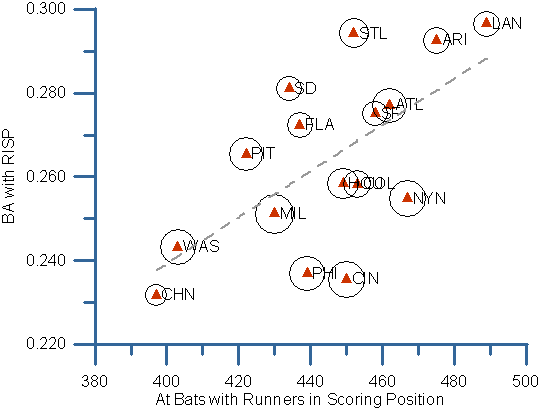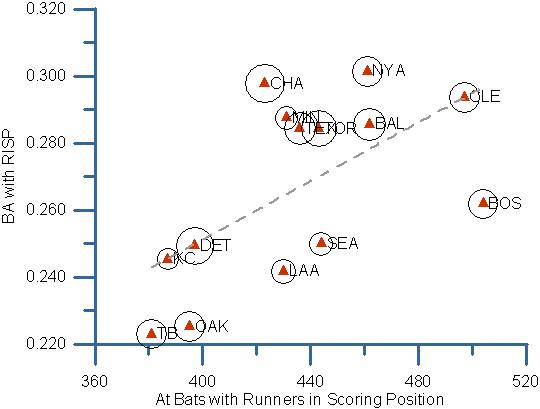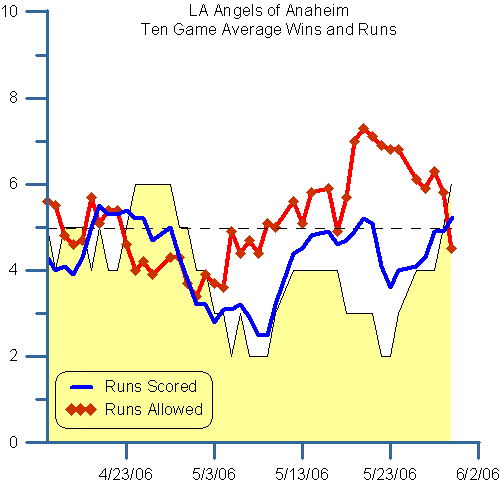Ten Things About Los Angeles Baseball
The Dodgers and the Angels. One team plays in Los Angeles, the other plays close enough for government work. The one that actually plays in LA got its name from dodging trolleys in Brooklyn; the one that doesn’t actually play in the city derived its name from a translation of the city’s name, kind of like calling the Boston Red Sox the Boston Bostons.
The Los Angeles Dodgers and Los Angeles Angels of Anaheim appear to have much in common, but appearances can be deceiving. Last year, the Dodgers suffered a horrible rash of injuries and finished a dismal 71-91 while the Angels soared to the AL West division championship with a 95-67 record. This year, the Angels are near the bottom of this year’s worst division and the Dodgers are near the top of the rejuvenated NL West. As I write these words, the Dodgers are 29-22 and the Angels are 22-29.
These teams are looking at each other in the mirror, passing each other on the freeway, add a metaphor of your own. There are so many good baseball stories percolating out of LA right now that I decided to take a closer look at both teams. Here’s what I learned…
The Dodgers are the best offensive team in the National League.
The Dodgers are averaging 5.5 runs a game, more than any other team in their league, even though they play in one of the least favorable offensive ballparks around. In fact, if you adjust their output for their ballpark and league (pity the poor NL teams with no DH), they may well be the best batting team in the major leagues.
In April, they were average at the plate, scoring 122 runs. But they have sizzled in May, scoring 166 in 27 games, a pace of 6.1 runs per game through May 30. Over the last thirty days…
- Nomar Garciaparra is batting .387/.444/.604 with 28 RBIs.
- Jeff Kent is batting .316/.421/.582 with five home runs.
- Rafael Furcal has a .370 On Base Percentage and Kenny Lofton has a .372 OBP. Jose Cruz’s OBP has been .403.
- Just for kicks, Ramon Martinez is batting .480/.567/.680 in 25 at bats. His lifetime line is .271/.322/.385.
And then there are the youngsters…
The Dodgers’ kids have been awesome.
Continuing with the stats from the last thirty days, recognize these names?
- 23-year-old rookie catcher Russ Martin has batted .279/.375/.426.
- 24-year-old Andre Ethier, a rookie obtained from Oakland in the Milton Bradley trade is batting .302/.375/.492.
- 23-year-old rookie Willie Aybar is batting .340/.466/.511.
- 21 year-old-rookie Matt Kemp was just called up and has batted .429/.444/.429 in his first seven at bats. All singles. Wimp.
Jon Weisman wrote a nice overview of what the kids have meant to the Dodgers for Sports Illustrated. Before the season even began, Baseball America ranked the Dodger minor league prospects the best in baseball. I don’t think anyone thought they would contribute so much so soon, but injuries have once again decimated the Dodgers. The difference between this year and last has been the kids; the Dodgers are this year’s 2005 Braves.
The Angels’ kids haven’t been quite awesome.
Before the season, the young Angels were probably better known than the Dodgers’ kiddie corps; Baseball America rated them third among all organizations in minor league prospects. Young batters such as Dallas McPherson, Howie Kendrick, Jeff Mathis, Erick Aybar and Casey Kotchman were creating headaches for Angel management feeling pressure to play the kids. Unfortunately, Angel management still sits on the fence, not really giving McPherson, Kotchman and friends enough playing time, and the kids haven’t inspired their confidence.
- Kotchman is batting .152/.221/.215 in 79 at bats.
- McPherson is batting .213/.226/.377 in 61 at bats.
- Kendrick is batting .115/.207/.115 in 26 at bats.
- Mathis is batting .103/.205/.205 in 39 at bats.
- Only Kendry Morales has made a case for more playing time, with a .290/.313/.516 line in 31 at bats.
The mixed blessing is that the Angels’ poor start may force management’s hands.
The Dodgers have been scoring the Angel way.
The Dodgers haven’t hit a lot of home runs. They’ve assembled their runs by getting men in scoring position and then batting them in. In fact, you can see how they’ve been scoring in this, one of my favorite graph formats. The bottom axis represents the number of at bats with runners in scoring position, the vertical axis is each team’s batting average with runners in scoring position and the circle size represents the number of home runs each team has hit.

See the team in the upper right of the graph? That’s the Dodgers, who are the NL’s best at getting runners into scoring position and batting them in. The irony is that this is the style of offense the Angels have been known for the past five years, as documented in this Jeff Angus interview with Mike Scioscia.
The Angels have been scoring runs the Dodger way.
Yet the Angels are scoring at the same pace the Dodgers scored last year, which is not much at all. They haven’t executed like the Angels of old. Here’s the same graph for the American League this year:

Last year, the Angels batted .296 with runners in scoring position. This year, they’re batting .243.
The Dodgers are second-best defensive team in the league.
The Dodgers have the second-best ERA, 3.91, in the National League. However, they do play in that pitcher’s park, so they’re probably not the second-best defensive team, once adjusted. But they’ve put up some impressive numbers nevertheless.
In particular, the Dodgers’ starters have been great, posting the second-lowest ERA among all major league starting rotations (3.73). The top starters have been Brad Penny and Derek Lowe, who are 8th and 10th in the league in ERA. Aaron Sele and Brett Tomko have also been significant contributors. Only Jae Seo and Odalis Perez have failed to impress. In other words, the veterans have gotten it done on the mound.
Well, except for Jonathan Broxton. Have I mentioned the Dodger kids?
Nomar!
Playing time was Nomar Garciaparra’s Achilles heel for several years (has he done anything to his Achilles’ tendon yet?) and if he hadn’t spent a couple of weeks on the DL in April, you’d be talking about the second-best offensive player in the league. Nomar has created 11.2 runs per game when he has played, and he’s batted .452 with runners in scoring position. According to fangraphs, he has 195 WPA points, four wins over average. That’s more than any other NL batter not named Pujols.
Pity the poor Cubs. They took the exact same gamble with Nomar last year, and got virtually nothing to show for it. After understandably letting Nomar walk, their star firstbaseman, Derrek Lee, hurt his wrist early this season, and they now have essentially replaced Lee with Neifi Perez (moving Todd Walker from second to first). Think they’d like to have Nomar back?
The Angels’ pitching and fielding have been just as bad.
As bad as the Angel offense has been, the Angels’ defense was just as bad in May. Here’s a graph of the Angels’ ten-game wining trends and ten-game averages of scoring and allowing runs.

That dotted line in the middle is the league average. When you score less runs than average, and allow more than average, you’re not good. The Angels’ woes are well documented by the redoubtable Jon Weisman.
It’s Weaver Time
On May 19-21, the Angels and Dodgers played three games in which the Dodgers outscored the Angels 31-7. Total devastation. The good news is that the Angels have gone 6-2 since that series. The better news is that the Angels decided to promote Jered Weaver less than a week later.
Jered is perhaps the best-known player in the Angel kiddie corps, primarily because he’s seemingly been followed by Rich Lederer since he was in utero. At the time of his promotion, he was leading the hitter-friendly PCL with a 2.05 ERA and 66 strikeouts in 57 innings. He didn’t disappoint in his first start, and Angel fans hope he doesn’t follow Cole Hamels’ example and wind up on the disabled list soon after his promotion.
The double-good news is that Jered’s promotion may have stimulated his older brother, Jeff, to turn it up a notch. Jeff Weaver epitomizes the weird Dodger/Angel synergy, having played for the Dodgers last year and the Angels this year. The older Weaver has been awful this year, with a 7.30 ERA before his last start. But he gave the Angels a quality start against the Rangers last Wednesday and the rest of the Angel year may yet be saved by the Weavers.
The lines for Dodger dogs have been horrible.
According to my on-site investigative reporter,
The new provider must have some sort of contract that lets them cut costs at will and doesn’t reward them for bad service. I’ve been a season ticket holder since 1977, and these lines are the worst ever (well, with the one exception of the lines for grilled Dodger dogs when Fox somehow thought we’d eat boiled ones).
Hmm. I wonder how long the hot dog lines are in Anaheim?
References & Resources
Writing about the Los Angeles teams is an intimidating assignment, because both the Angels and Dodgers are well-covered by some of the best writers anywhere. In particular, Jon Weisman’s Dodger Thoughts, Chronicles of the Lads, Rob McMillin’s 6-4-2 blog, and Rich Lederer of Baseball Analysts consistently provide insightful and entertaining commentary.
